Recent Articles
Popular Makes
Body Types
Rolex Monterey Motorsports Reunion: Then And Now
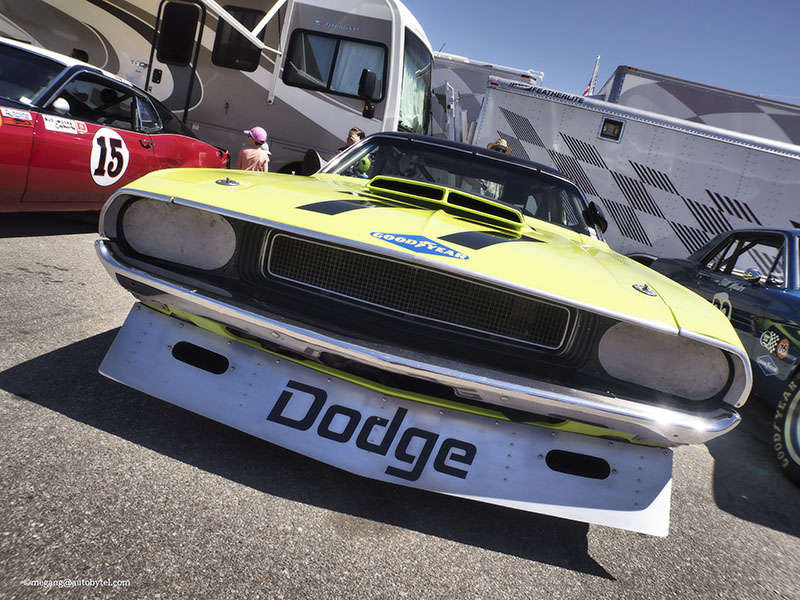
Dodge Challenger T/A ・ Photo by Megan Green
The Rolex Monterey Motorsports Reunion is one of the biggest dates on the North American historic racing calendar, as hundreds of cars from all eras of motorsport descend on Mazda Raceway Laguna Seca in Monterey, California. Thrills abound as these often rare and always exciting historic race cars show off their vibrant liveries, heart-stopping exhaust notes, and exceptional performance on the challenging road course.
We thought it would be illuminating to put together a list of those heroes of yesteryear matched up with their modern equivalents to see how much has changed since they first hit the asphalt. Check out our 10-car 'Then and Now' look at the Rolex Monterey Motorsports Reunion.
Rolex Monterey Motorsports Reunion - Then And Now - 01 - Ford Mustang
The original Trans-Am racing series ran from 1966 to 1972 and one of its biggest stars was the Ford Mustang Boss 302, a muscle coupe conceived to dominate in what was arguably the most competitive form of road racing in America. Debuting in 1969, the Ford Mustang Boss 302 offered fastback styling and a suspension package designed for the rigors of motorsports. Stripped of anything that might resemble a street interior, the Boss 302 also featured a blueprinted 5.0-liter motor (hence the 302 moniker) producing as much as 500 horsepower at 8,500 rpm.
Just a few short years ago Ford produced a Mustang Boss 302 tribute that incorporated many of the latest advances in performance technology, even building a unique Laguna Seca model. The 2015 Ford Mustang GT, however, is an even greater leap forward thanks to its independent rear suspension (Trans-Am cars and even last year's street model had a live-axle setup) and its 5.0-liter engine good for 435 horses and 400 lb-ft of twist without the need to be maintained by a dedicated team of mechanics.
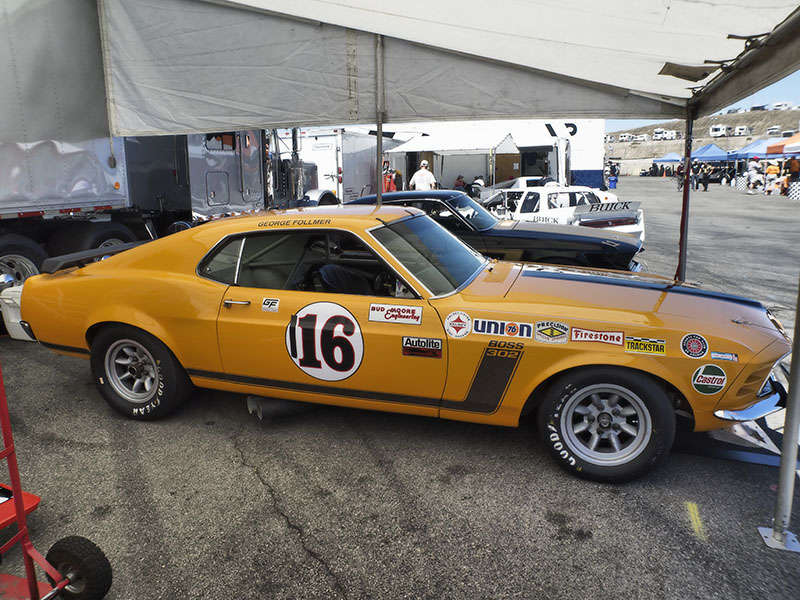
Photo by Megan Green
Rolex Monterey Motorsports Reunion - Then And Now - 02 - Chevrolet Camaro
The Chevrolet Camaro also had a distinguished history in Trans-Am racing, and these cars from the late 60s were dubbed Z/28s and offered roughly the same power and suspension specifications as the Boss 302. Chevrolet took a single Trans-Am title during the golden era of 1968-1972, but that's not the end of the story for GM's answer to the Mustang pony car: countries as far-flung as Sweden have run Camaro-specific road racing championships since 1974, indicating just how much appeal the coupe projects.
Flash forward to the 2015 model year and the new Chevrolet Camaro Z/28 brings back the glory years of the car's racing heritage with a vengeance. Boasting a 500 horsepower, 7.0-liter V-8 that also churns out 470 lb-ft of torque, it's the quickest Camaro ever sold by GM for street use. The modern Z/28 also comes with carbon-ceramic brakes, a limited-slip rear differential, and a track-ready suspension that makes it the near-equal of the race-focused original Camaro Z/28s.
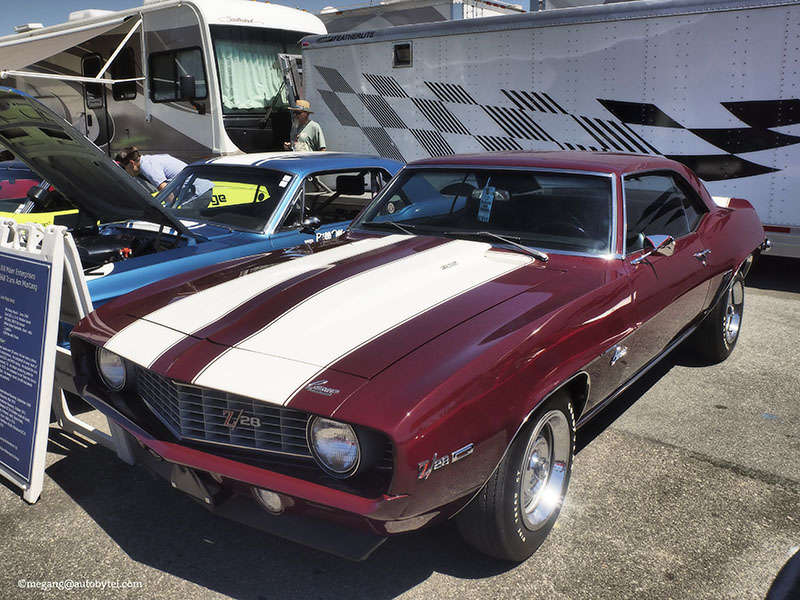
Photo by Megan Green
Rolex Monterey Motorsports Reunion - Then And Now - 03 - Dodge Challenger
The Dodge Challenger was another modern muscle car ancestor with a strong Trans-Am presence. The Dodge Challenger T/A competed with a destroked 340 cubic inch V-8 engine that was good for roughly 460 horsepower, and while it might not have been a Hemi its lightweight character made the car a better performer in the corners. The Challenger T/A we found in Monterey was originally campaigned by Sam Posey and backed by Dodge, and it finished fourth overall in points during the 1970 season.
Today's 2015 Dodge Challenger is the most retro-looking of all current muscle coupes, right down to the availability of a Shaker hood option. Although it's bigger and heavier than the model it pays tribute to in name, the 2015 Dodge Challenger ups the power ante considerably with the SRT Hellcat model, a vehicle which boasts the title of most powerful V-8 on the planet due to its supercharged 6.2-liter mill that's good for 707 horses and 650 lb-ft of torque.
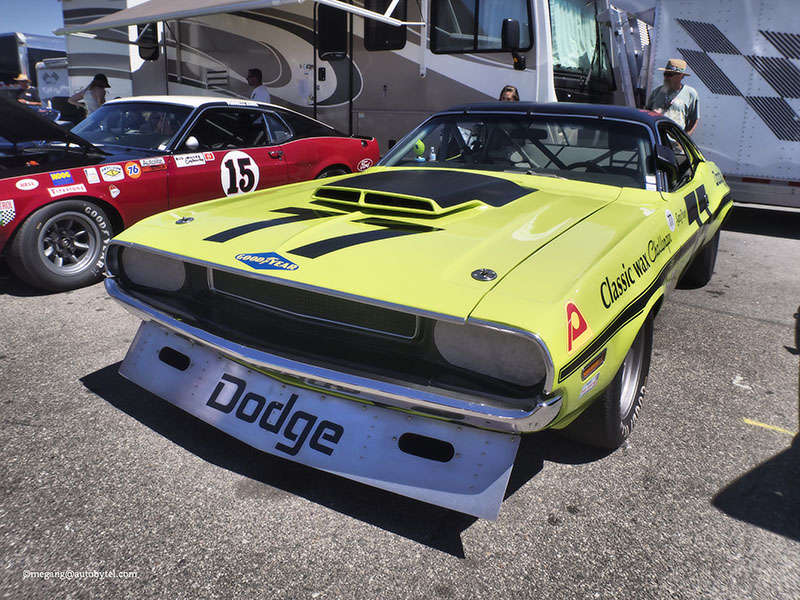
Photo by Megan Green
Rolex Monterey Motorsports Reunion - Then And Now - 04 - Nissan Z
The letter Z has always stood for something special in the road racing universe, regardless of whether it was preceded by the name Datsun or Nissan. The Rolex Monterey Motorsports Reunion brought several historic Z cars to the public, but one of the most storied was the No. 75 Nissan 300ZX originally campaigned by Steve Millen in the 1994 24 Hours of Le Mans. Not only did Team STILLEN race this GTS-class car in one of the sport's most prestigious events, but they also won top spot in their class, and finished fourth overall. The car proved to be so dominant in IMSA competition (also winning the 12 Hours of Sebring) that the twin-turbo V-6 engine under the hood of the 300ZX was banned from further participation in the series.
The 2015 Nissan 370Z has more styling cues in common with the original 70s-era 240Z than the 90s 300ZX, but under the hood it boasts a 3.7-liter V-6 that produces 332 horses and 270 lb-ft of torque - better numbers than what the 300ZX's turbocharged unit was able to generate in stock form. The 370Z also preserves the traditional Z car handling prowess and affordability, making it a popular everyday sports car for a new generation of drivers.
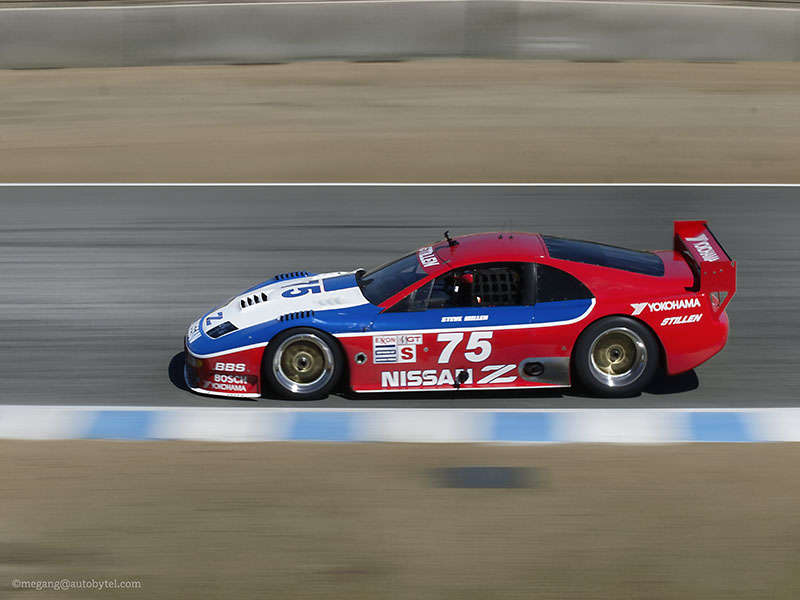
Photo by Megan Green
Rolex Monterey Motorsports Reunion - Then And Now - 05 - Porsche 911
The Porsche 911 is a sports car racer that needs almost no introduction. Ever since its rear-engine design first hit the scene in Europe, the Porsche 911 became a favorite tool for professional road racers eager to leverage its unique center of gravity and well-designed suspension system on the way to victory. Eventually the 911's fame spread across the Atlantic until it attracted the attention of American drivers seeking similar glory. The model pictured above is a 1968 Porsche 911S owned by Tom O'Callaghan and driven by Phil Baley.
The Porsche 911 has evolved into more of a GT than a pure sports car over the years, but there's no denying that the twin-turbo 2015 Porsche 911 Turbo S, with its 560 horsepower, 516 lb-ft of torque, and standard all-wheel drive is one of the most thrilling performance coupes on the market. If you're looking for more affordable fare, then even the entry-level Porsche 911 Carrera delivers significant fun via a 3.4-liter, 350 horsepower six-cylinder engine.
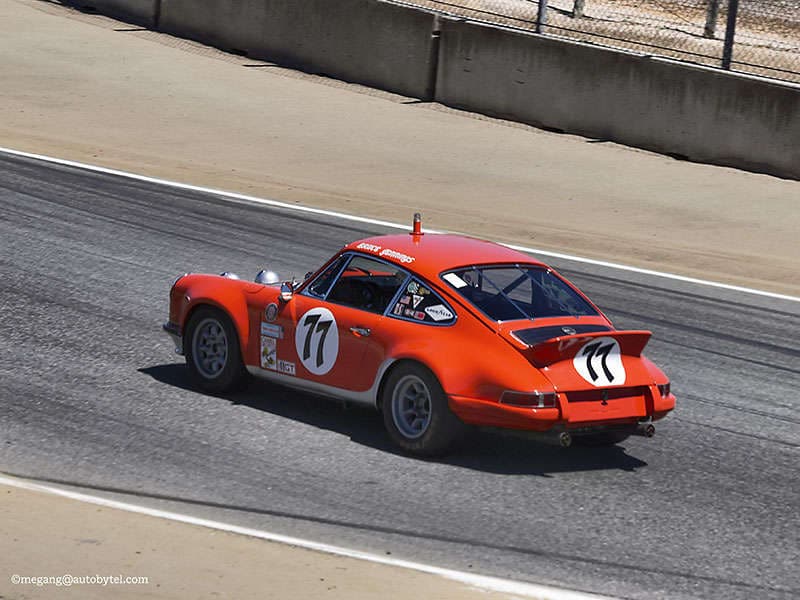
Photo by Megan Green
Rolex Monterey Motorsports Reunion - Then And Now - 06 - BMW 2002
The BMW 2002 got the German automaker's foot in the door of grassroots motorsports and brought a new demographic of drivers under the blue-and-white roundel. The BMW 2002 offered privateers a lightweight and inexpensive (on the used market) coupe that was perfect for SCCA racing, and its 2.0-liter, four-cylinder engine offered 120 high-revving horsepower when it went on sale in the U.S. in 1968. In many ways the 2002 was the direct spiritual ancestor to the E30 generation of BMW's famed M3, and eventually sparked a turbocharged model - the 2002 Turbo - that pushed power to 170 horses.
There's really nothing like the BMW 2002 in the current line-up of the German luxury brand, but if you squint really hard you can draw a parallel between the compact coupe and the 2015 BMW M235i two-door. The M235i is the lightest performance model available from the automaker, with a suspension system that has been tweaked for maximum pleasure on twisty roads, but its 320 horsepower turbocharged 3.0-liter six-cylinder engine is worlds away from the plucky four that was once the staple of BMW's sporting efforts.
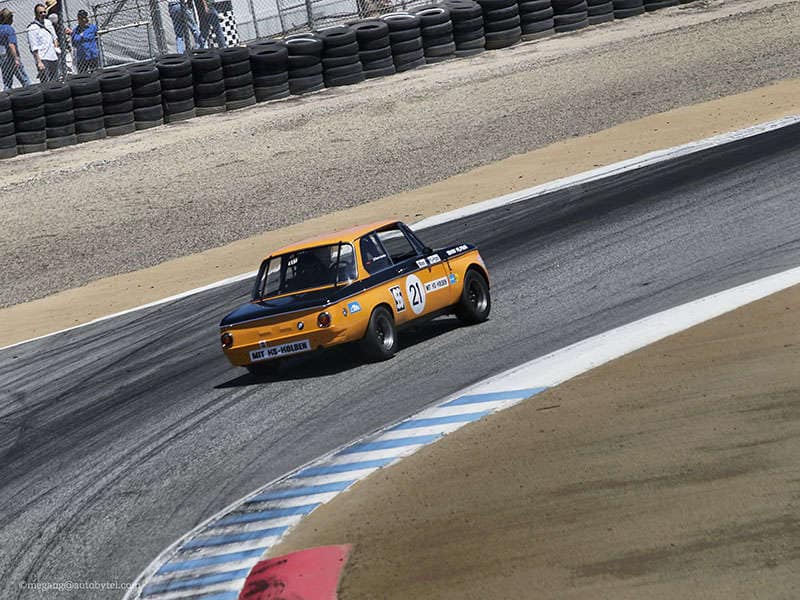
Photo by Megan Green
Rolex Monterey Motorsports Reunion - Then And Now - 07 - Nissan GT-R
Despite the fact that Americans have only been able to sample Nissan's GT-R supercar since 2007, in Japan the Nissan Skyline GT-R has been terrorizing highways, byways, and racetracks for much longer. The original 1969-1972 generation has acquired a definite cachet amongst classic racers taken by its squared-off shape, its 160 horsepower straight-six engine, and its rear-wheel drive handling dynamics. Although only about 2,000 examples were produced, a sizable number found their way into various racing series of the time.
The 2015 Nissan GT-R is no longer the little sedan (or compact coupe) that could, but rather a world-beating ultra-performance car that counts on several high tech systems to dominate on the street and the track. All-wheel drive, a twin-turbo V-6, and 545 horsepower allow the GT-R to hit 60-mph from a standing start in just 3.2 seconds, and if you want even more gumption the GT-R NISMO offers up a fantastic 600 horsepower.
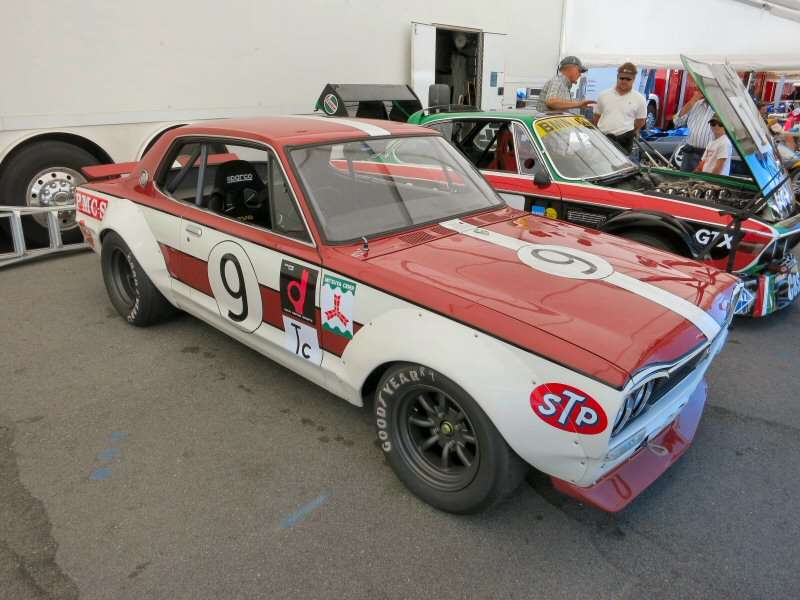
Photo by Benjamin Hunting
Rolex Monterey Motorsports Reunion - Then And Now - 08 - Chevrolet Corvette
The Chevrolet Corvette found its way into racing almost the day after it first went on sale in 1953, but some forget that the original roadster wasn't powered by a mighty V-8 but rather a humble inline six-cylinder engine that was good for 150 horsepower and was managed by a two-speed automatic transmission. By 1955 the Corvette had gained a small V-8 and was attracting U.S.-based racers eager for a homegrown answer to the little British sports cars that were dominating entry-level racing at the time. From there the legend grew as the Chevrolet Corvette went on to fantastic success across a wide range of racing series.
The 2015 Chevrolet Corvette Stingray still features a few callbacks to the original Vette, including a pushrod-based engine design and the availability of a roadster model, but its 6.2-liter V-8 engine's 455 horsepower and 460 lb-ft of torque would lay waste to any competitor from the 50s or 60s. The Corvette Stingray also features a seven-speed manual transmission and an elaborate traction control and stability control system that makes up for any perceived deficiencies in driving talent.
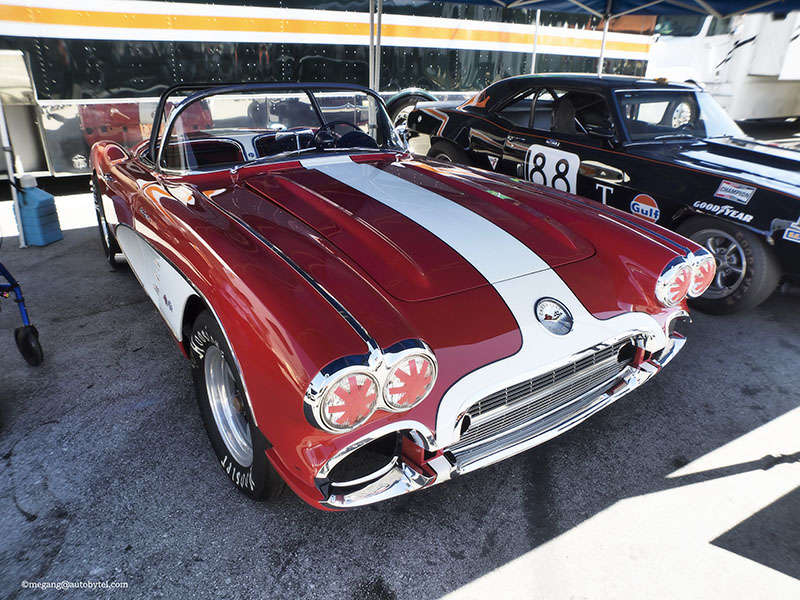
Photo by Megan Green
Rolex Monterey Motorsports Reunion - Then And Now - 09 - Jaguar E-Type
When the Jaguar E-Type went on sale in 1961 it expanded on several of the performance concepts pioneered by the Jaguar D-Type race car. The end result was that the E-Type offered better handling than any other model ever produced by the brand, along with stunning body work and a hearty 265 horsepower from a 4.2-liter six-cylinder engine. Racers of means flocked to the E-Type in both the U.S. and Europe and it enjoyed a long stay as one of the go-to sports cars for road course competition in the 1960s.
In 2014 Jaguar released the F-Type roadster, joined shortly thereafter by the 2015 Jaguar F-TYPE coupe - the successors to the E-Type not just alphabetically but also in terms of sporting appeal. Motivated by a range of engines (including a 340 horsepower, supercharged V-6 and a top-tier 495 horsepower, 5.0-liter supercharged V-8), the F-Type is the most dynamically interesting vehicle to have been built by Jaguar since the E-Type ended production in 1975.
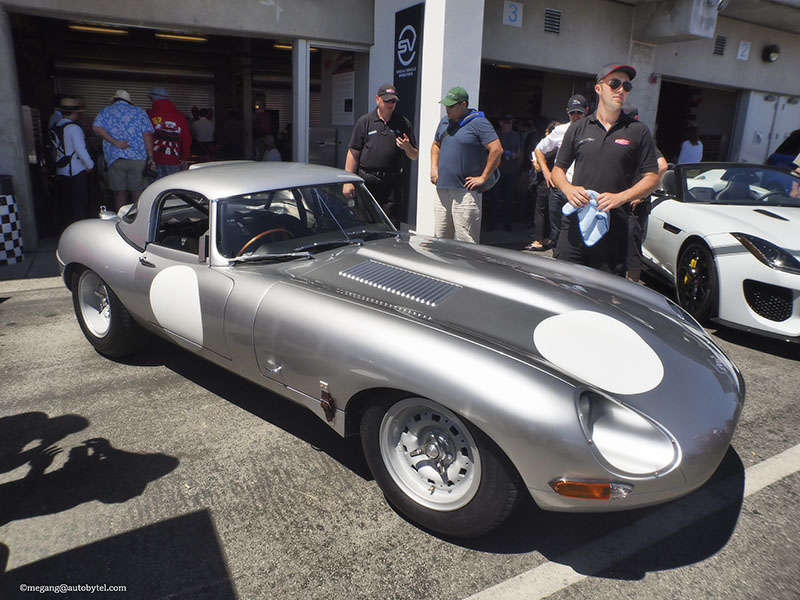
Photo by Megan Green
Rolex Monterey Motorsports Reunion - Then And Now - 10 - Ferrari 250 GT
The Ferrari 250 GT enjoyed 10 years of motorsports glory in the 1950s and 1960s before being retired by Enzo Ferrari in favor of the next stage in sports car evolution, the Ferrari 275. Of course, that didn't discourage cognoscenti from keeping the 250 GT flame alive on race courses all over the world, charmed by the car's 300 horsepower V-12 and exceptionally lightweight design. The Ferrari 250 GT competed in some of the most important races of the era including the Mille Miglia, the Carrera Panamericana, and the 24 Hours of Le Mans.
Ferrari continues to build some of the most engaging sports cars on the planet, but it's the Ferrari 458 Italia that claims the strongest link to the same competitive spirit embodied by the 250 GT. Although the 458 Italia might feature an eight-cylinder engine rather than a twelve-cylinder unit, its 570 horsepower and advanced chassis tuning have seen it race in Grand-Am, GT2, GT3, and even it's own dedicated 458 Challenger series.
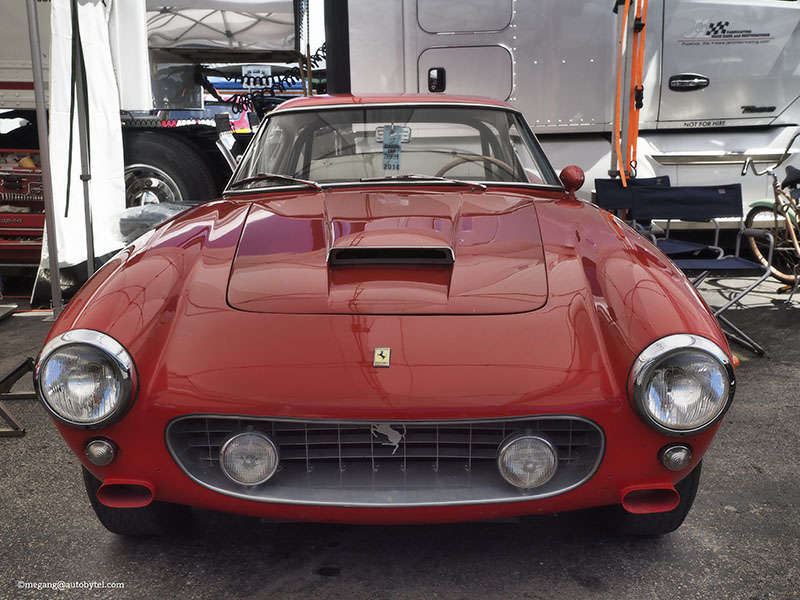
Photo by Megan Green